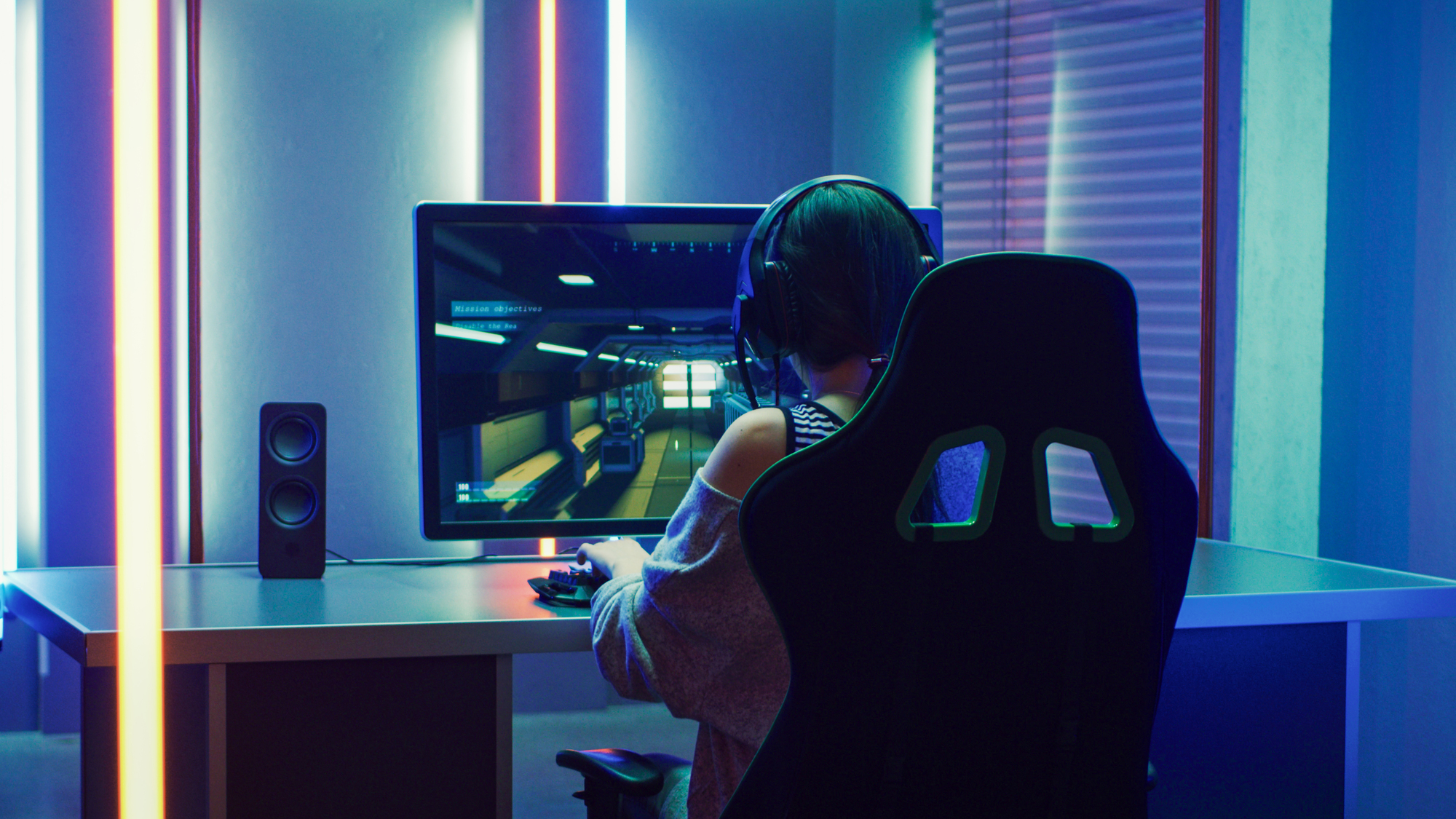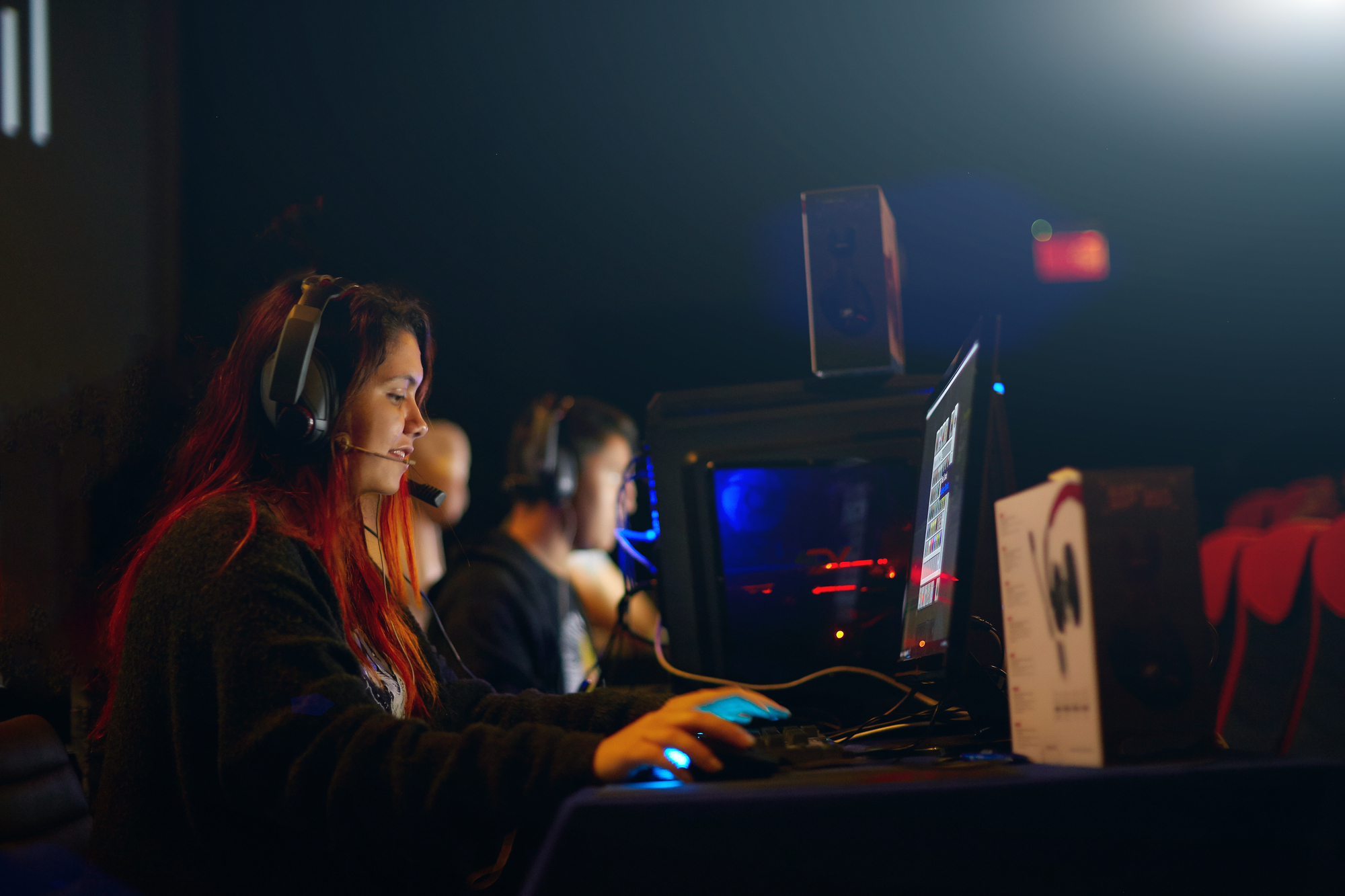Gaming spaces have evolved beyond simple setups with a console and TV. Modern architecture now plays a crucial role in creating immersive gaming environments. A well-designed gaming space combines aesthetic appeal with practical functionality to enhance the overall gaming experience.
The layout of a gaming room is key to its success. Open floor plans allow easy movement and interaction between players. Zoning different areas for gaming, relaxation, and socializing helps organize the space efficiently. Proper acoustics are also essential, with sound-absorbing materials on walls and windows to minimize noise disruption.
Comfort and technology integration are equally important in a modern gaming space. Ergonomic furniture supports long gaming sessions, while cutting-edge audio-visual systems and high-speed internet connectivity provide a seamless gaming experience. Lighting design can also dramatically impact the ambiance, with options ranging from ambient LED strips to dramatic accent lighting.
Architectural Design and Layout
Effective architectural design and layout are crucial for creating an optimal gaming space. A well-planned layout maximizes functionality while incorporating essential elements like lighting and acoustics.
Maximizing Space for Gaming
Gaming spaces require careful planning to accommodate equipment and players comfortably. Open floor plans work well, allowing for flexible arrangement of gaming stations and seating. Multi-functional furniture, such as storage ottomans or fold-down desks, can help save space in smaller rooms. Wall-mounted shelving units provide storage for games and accessories without taking up floor space.
For multiplayer setups, consider a centralized gaming area with surrounding seating. This arrangement facilitates social interaction and spectating. In larger spaces, separate zones for different gaming types (e.g., console, PC, VR) can be created. Include ample power outlets and cable management solutions to keep the area tidy and prevent tripping hazards.
Incorporating Natural Light and Ambient Lighting
Balanced lighting is key in gaming spaces. Natural light helps reduce eye strain and creates a more pleasant atmosphere. Large windows or skylights can provide ample daylight, but include adjustable blinds or curtains to control glare on screens.
For artificial lighting, use a combination of ambient and task lighting. Overhead fixtures with dimmers offer general illumination, while desk lamps or LED strips provide focused light for keyboards and controllers. Bias lighting behind monitors can reduce eye fatigue during long gaming sessions.
Color-changing smart bulbs allow gamers to adjust the room’s ambiance to match their game or mood. Cool blue tones can enhance focus, while warmer hues create a relaxing environment.
Soundproofing for Immersive Audio
Good acoustics enhance the gaming experience and prevent noise disturbances. Start by selecting materials that absorb sound, such as carpets, upholstered furniture, and acoustic panels. These elements reduce echo and improve audio clarity.
For walls shared with other rooms, consider adding insulation or using soundproof drywall. Weatherstripping around doors and windows helps block external noise. Bass traps in corners can manage low-frequency sounds from powerful subwoofers.
Suspended or dropped ceilings with acoustic tiles can further improve sound isolation. For serious audio enthusiasts, a dedicated listening area with optimized speaker placement and room treatment can create an immersive soundstage.
Furnishing for Comfort and Functionality
Creating a gaming space that balances comfort and functionality requires careful selection of furniture and equipment. The right choices can enhance gameplay and promote physical well-being during extended sessions.
Choosing the Right Gaming Chair
A high-quality gaming chair forms the foundation of a comfortable gaming setup. Look for chairs with adjustable lumbar support, armrests, and seat height to fit different body types. Breathable materials like mesh help prevent overheating during intense gaming sessions.
Consider chairs with tilt mechanisms and rocking features for varied sitting positions. Some models offer built-in massage functions or cooling systems for added comfort. Weight capacity and durability are key factors, especially for heavier users or those who game frequently.
Price ranges vary widely, so set a budget and prioritize features that align with individual needs and preferences.
Strategic Seating and Furniture Placement
Arrange seating to maximize screen visibility and minimize glare. Position the main gaming chair at an optimal distance from displays – typically 1.5 to 2 times the diagonal screen size for TVs, or arm’s length for monitors.
Include additional seating options for multiplayer sessions or spectators. Modular sofas or bean bags offer flexibility for different group sizes. Place side tables within reach for drinks, snacks, or gaming peripherals.
Consider traffic flow when arranging furniture. Leave enough space between pieces to move comfortably, especially in smaller rooms or shared spaces.
Integrating Functional Gaming Essentials
Incorporate storage solutions to keep gaming areas tidy and organized. Shelving units or cabinets can house game collections, consoles, and accessories. Cable management systems help reduce clutter and prevent tripping hazards.
A sturdy gaming desk provides space for multiple monitors, keyboards, and other peripherals. Look for models with built-in cable management and adjustable height options for ergonomic benefits.
Add task lighting to reduce eye strain during long gaming sessions. Bias lighting behind screens can enhance contrast and create a more immersive atmosphere. Dimmable options allow for customized lighting based on time of day or game type.
State-of-the-Art Gaming Technology
Modern gaming spaces integrate cutting-edge hardware and accessories to create immersive experiences. High-performance equipment and thoughtful setup enhance gameplay and comfort for extended sessions.
Selecting Top-notch Gaming Consoles and PCs
Gaming consoles offer plug-and-play simplicity with exclusive titles. The PlayStation 5 and Xbox Series X provide 4K resolution, fast load times, and advanced haptic feedback. Nintendo Switch combines portability with unique gameplay mechanics.
For maximum flexibility, custom gaming PCs deliver unparalleled performance. High-end processors like Intel Core i9 or AMD Ryzen 9 paired with NVIDIA RTX 3080 or AMD Radeon RX 6800 XT graphics cards handle demanding games at high frame rates. Solid-state drives reduce load times significantly.
Cooling systems keep components running optimally during intense gaming sessions. Liquid cooling offers quiet operation and improved thermal management compared to traditional air cooling.
The Importance of High-Quality Peripherals
Quality peripherals elevate the gaming experience. Mechanical keyboards with customizable RGB lighting and programmable macro keys give players an edge in competitive games. Low-latency wireless or wired gaming mice with adjustable DPI settings improve aiming precision.
High-refresh-rate monitors (144Hz or higher) reduce motion blur and screen tearing for smoother visuals. IPS panels offer better color accuracy and wider viewing angles than TN displays.
Gaming headsets with virtual surround sound help players pinpoint enemy positions in first-person shooters. Noise-canceling microphones enable clear communication in multiplayer games.
Ergonomic gaming chairs support proper posture during long play sessions, reducing fatigue and potential health issues.
Effective Cable Management Systems
Proper cable management keeps gaming setups organized and safe. Cable sleeves group multiple wires together, reducing clutter. Adhesive cable clips secure cords along desk edges or walls.
Under-desk cable trays hide power strips and excess cord length. Velcro ties bundle loose cables neatly.
Wireless peripherals minimize cable clutter but may introduce latency. For competitive gaming, wired connections often provide the most responsive input.
Cable management improves airflow around electronics, preventing overheating. It also reduces tripping hazards and makes cleaning easier.
Creating a Personalized Gaming Atmosphere
A personalized gaming space reflects individual tastes and enhances the overall gaming experience. Custom elements and thoughtful design choices transform a room into a unique sanctuary for players.
Incorporating Memorable Collectibles and Memorabilia
Gaming memorabilia adds character to a gaming room. Display cases or shelves showcase prized possessions like limited edition figurines, signed posters, or vintage consoles. Wall-mounted shadow boxes protect and exhibit rare game cartridges or controllers.
Arrange items by theme, franchise, or color for visual impact. Rotate displays periodically to keep the space fresh. Consider adding LED lighting to highlight special pieces.
Framed concept art or maps from favorite games create focal points on walls. Custom-made gaming-inspired art pieces blend personal interests with decor.
Designing with Personal Touches and Themes
Choose a color scheme that reflects favorite game palettes or personal preferences. Paint accent walls or add themed wallpaper to set the mood. Customized neon signs or LED strips provide ambient lighting and reinforce the chosen theme.
Select furniture that combines style and function. Gaming chairs in bold colors or patterns make a statement. Multi-functional pieces like storage ottomans or modular shelving units maximize space efficiency.
Incorporate textures through area rugs, throw pillows, or wall hangings inspired by game environments. Use removable decals for easy theme changes as interests evolve.
Additional Entertainment Features
Expand gaming options with classic arcade machines or pinball tables. A foosball or air hockey table adds variety for multiplayer gatherings. Install a small bar area with a mini-fridge and snack storage for extended gaming sessions.
Create a cozy reading nook with bean bags and bookshelves for gaming strategy guides and comics. Add a large screen TV or projector for watching gaming tournaments or movies.
For active gamers, include space for VR setups or motion-control games. A compact exercise area with resistance bands or a yoga mat supports physical well-being during long gaming marathons.












